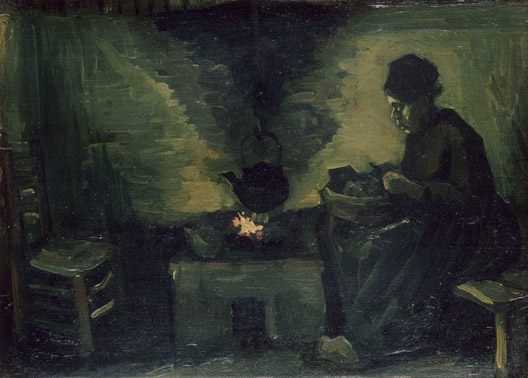Fr : version française / En: english version
It's Winter, light the fire!
It is obvious that the fire heating the tea kettle of this elderly peasant woman is not enough to warm her, no more than the painting itself for that matter. Yet the terms hearth, fireside and chimney all conjure up the comforts of a fire's warmth.
En yver, du feu, du feu !
En yver, du feu, du feu !
Et en esté, boire, boire !
C'est de quoy on fait memoire,
Quant on vient en aucun lieu.
Ce n'est ne bourde, ne jeu,
Qui mon conseil vouldra croire :
En yver, du feu, du feu !
Et en esté, boire, boire !
Chaulx morceaulx faiz de bon queu*
Fault en froit temps, voire, voire ;
En chault, froide pomme ou poire
C'est l'ordonnance de Dieu :
En yver, du feu, du feu !
Charles d'Orléans
In the distant past, the ability of humans—mammals whose coat of hair was too thin—to control fire is what allowed them to migrate to colder climates and survive in glacial periods.





























